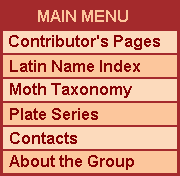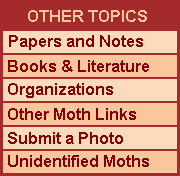The MPG mapping database offers us the opportunity to restrict our view of plates and species pages by state, province or geographical region. The map above divides North America north of Mexico into ten regions. In addition, you can view eastern Canada (Ontario to the Atlantic) and western Canada (Saskatchewan to the Pacific) which includes Alaska as a bonus.
Not shown on the standard MPG map is Alaska and Yukon (included in Pacific Northwest), Northwest Territory (included in Upper Plains, Nunavut and Greenland (included in Northeast). The states of Wyoming, Tennessee and North Carolina are included in two regions. For instance, Tennessee leps are included in both the Southeast and the Midwest. Unfortunately we are not yet at the point where we can conveniently divide northern from southern California, nor can we yet divide along the 100th meridian the column of states from Texas to North Dakota (a natural divide between a host of eastern and western species).
| Region | Species | |
| North America | 13,000 | |
| Canada: Eastern | 2,915 | |
| Canada: Western | 3,212 | |
| Pacific Northwest | 2,797 | |
| Upper Great Plains | 3,164 | |
| Lower Great Plains | 3,570 | |
| Northeast | 3,823 | |
| Upper Midwest | 3,001 | |
| Lower Midwest | 3,778 | |
| Mid-Atlantic | 3,313 | |
| Southeast | 4,186 | |
| South Central | 4,261 | |
| Southwest | 6,652 | |
There are roughly 13,000 species of lepidoptera in our area of coverage. We have mapping data for almost 12,000 species and photographs of a slightly smaller number. Until now, if you wanted to scroll through all the plates showing living moths or spread specimens you had to scroll through all those species. Now you can elect to view only species known from a single state or province or from within your region of interest. I live in Maryland where there may be about 2,500-3,000 species. When I am trying to identify a moth I have photographed there is no need for me to see all the species from western North America or from Florida. I can search through the photos of likely candidates much, much faster if I view only the species from Maryland or the East Central region. But there are some problems to be considered.
For many states and provinces our mapping data is far from complete. Consider Rhode Island where we currently list about 200 species (out of a potential 2,000 or more species). It would be foolish not to use the Northeast option when searching for a moth from Rhode Island. In the case of Maryland where we have a pretty good list, or in Florida or California where we have excellent lists, they are still probably far from complete with respect to micromoths. I would much prefer to use the East Central option when searching for macromoths, and I would certainly use the full MPG plates when searching for micros.
The success of using the state and regional approach to identify moths depends in part on you. If you happen to live in New Jersey where we have data for just over 1,300 species (out of a potential 2,500+ species), you can help to improve things if you submit your personal species list at the end of each moth season. This is also true for every state and province. See the About MPG Maps page.



.jpg)



.jpg)